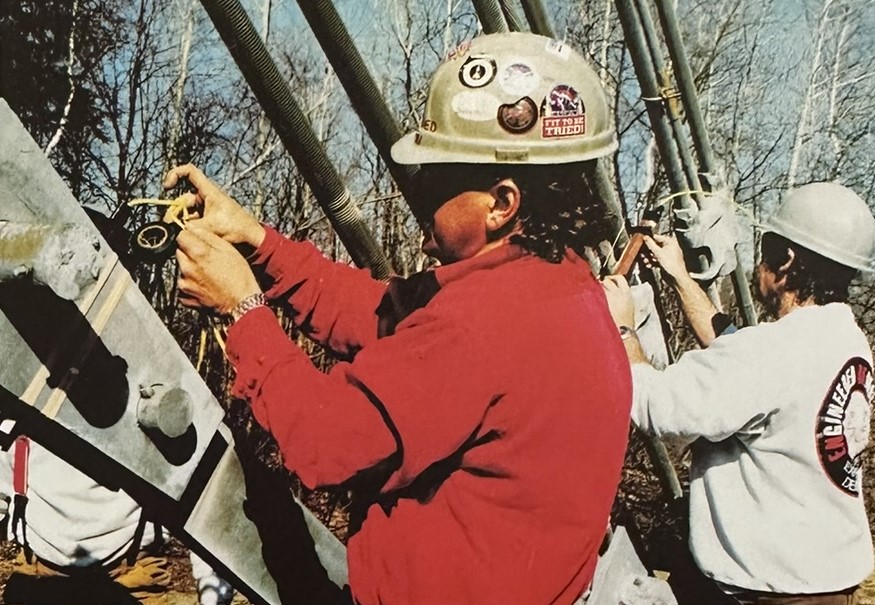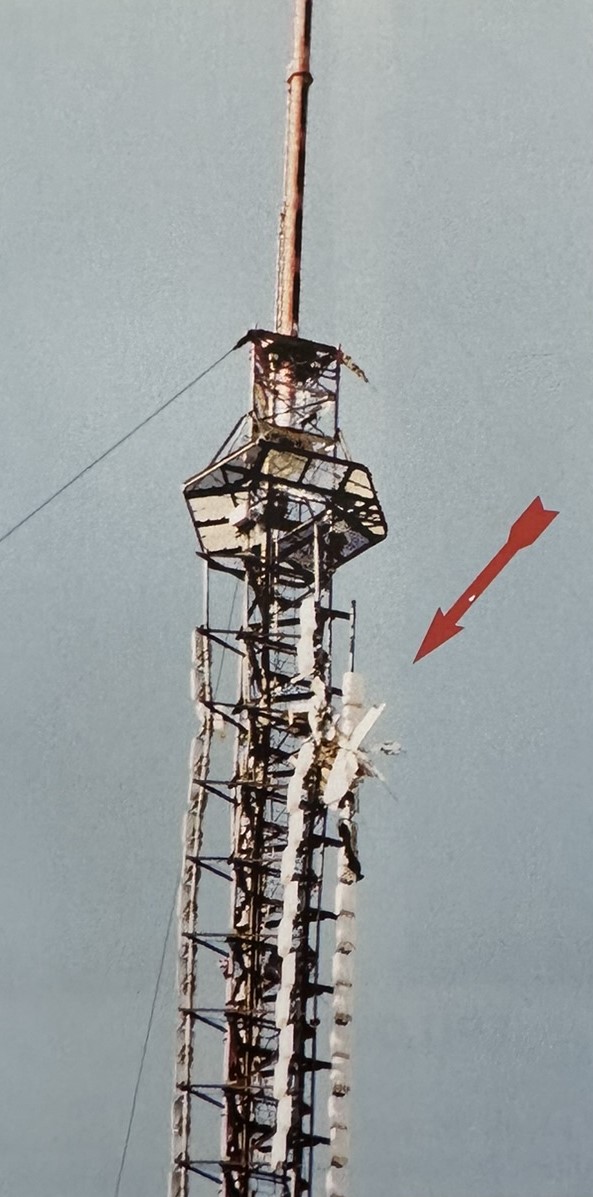Delicate Demolition
May 28, 2024

This article originally appeared in the July/August 2001 issue of DEMOLITION magazine.
The Tragedy
An emergency demolition project related to a bizarre plane crash has reportedly set a new world record for tallest structure ever explosively demolished.
On Sunday, April 22, 2001, 38-year-old Gilbert Paquette was killed when his single-engine Cessna 150 struck a 1,217-foot-tall communications tower while flying in heavy fog over a remote region of upper Quebec Province.
At first, local townspeople and recue crews were perplexed by the lack of debris at the crash scene. It wasn’t until several hours later that a policeman, pouring over the site, happened to look upward and notice the aircraft’s main fuselage firmly wedged into the tower approximately 1,100 feet above the ground. Shortly thereafter, a local coroner surveyed the wreckage via helicopter and pronounced Mr. Paquette dead.
Beyond the obvious human tragedy, tower technicians dispatched to the site described the accident as a “technological nightmare.” The plane’s impact had knocked the massive structure several feet off center, affecting Quebec’s primary Canadian Broadcasting Company transmission point as well as a host of other radio stations, GPS and cellphone transmitters.
Homes and businesses within a 2-kilometer radius of the tower were quickly evacuated as officials from several emergency management agencies converged on the scene. Within 48 hours, a team of structural engineers reached a consensus that the tower was too unstable for salvage crews to scale and officials struggled to find an alternative method of recovery.

The Dilemma
One by one, alternative recovery methods were ruled out.
A helicopter operation was deemed too dangerous due to unpredictable winds and possible complications with the tower’s guide wires. A worldwide search for the loftiest cherry pickers, high-reach platforms and tower cranes — including state-of-the-art units available in Europe — found that all were still far too short to reach the wreckage.
The widow of Mr. Paquette then weighed in with her preference that nothing be done, stating to reporters that he should be permitted to drop from the tower naturally, “like an apple from a tree.” However, residents living in the shadow of the tower respectfully objected to this “apple” plan.
Several other ideas were discussed, and all were eventually dismissed for possessing too much risk to salvage personnel or to the homes and businesses located below.
After several days of careful consideration, emergency management officials concluded that the only way to safely recover the wreckage was to dismantle the entire $6-million structure.
 Looking to demolition experts for guidance, officials contacted one of America’s premier rapid response teams, NDA member Engineered Demolition Inc. (ENDE) of Hayden Lake, Idaho. A crew of specialists led by blaster Eric Kelly were rushed to the scene within hours. After touring the zone and studying site plans, Mr. Kelly determined that the tower could be explosively “folded” in on itself in a way that would not endanger several homes located just 300 feet from its base.
Looking to demolition experts for guidance, officials contacted one of America’s premier rapid response teams, NDA member Engineered Demolition Inc. (ENDE) of Hayden Lake, Idaho. A crew of specialists led by blaster Eric Kelly were rushed to the scene within hours. After touring the zone and studying site plans, Mr. Kelly determined that the tower could be explosively “folded” in on itself in a way that would not endanger several homes located just 300 feet from its base.
ENDE’s calculations called for the detonation of eight pounds of explosives on two delays that would sever seven pre-designated support cables. The operation would systematically release 136,000 pounds of tension, thereby allowing the tower to fail and stack up within the perimeter of the cable anchors.
The plan was approved by all parties, and the explosives team set about affixing a total of 22 2,000-grain RDX shaped charges to various cable supports at two independent anchor points.
While this was occurring, field technicians from Protec Documentation Services inspected adjacent structures and installed seismographs at critical points around the site to record air and ground vibrations generated from the blast as well as the tower’s impact with the ground.
The Blast
Although the pilot’s family had initially stated that they would not attend the blast, an 11th hour change of heart required that the demolition be delayed for several hours. Throughout the afternoon, local townspeople and emergency personnel mingled together on street corners and in front yards, waiting nervously for the signal to be given.
The family arrived just after 6 p.m. and were ushered to a secluded viewing area on the grounds of a nearby church. A long siren then gave notice to all that the blast was imminent, and the local police chief came over a loudspeaker to request a minute of silence. Shortly thereafter, the initiation of det-cord could be heard in the distance, followed by two cracking booms.
The tower gradually bowed to the west, then failed at two central points. Almost as if falling in slow motion, the upper sections began a graceful descent back toward the east. No impact noise was heard as the structure slowly disappeared behind a row of nearby trees. When all was done, the tower’s mast had landed less than 100 feet from its base, and the aircraft wreckage was recovered fully intact.
According to demolition industry officials, the felling of this 1,217-foot tower breaks the existing world record for the tallest structure ever demolished with explosives. The previous record holder was recognized as an obsolete 1,202-foot radio tower in Annapolis, Maryland, that was blasted for the United States Navy in December 1999.
Officials estimate it will take approximately nine months to erect a replacement tower on the Quebec site.
Epilogue
Many people remain puzzled as to how the pilot, with no other structures standing as tall for nearly a thousand-mile radius, happened to run his airplane directly into this tower. What are the odds? And was it simply a case of really bad luck? Probably not.
According to crash investigators, the pilot had flown this particular route many time before, and they theorize that the 1,078-foot tall main structure and 137-foot mast were actually serving as one of his GPS reference points. The dense fog present that morning probably didn’t cause him much concern, as he knew how much time it typically took to travel from point A to point B.
The problem likely occurred when he picked up a tailwind along the way, causing his plane to incrementally travel faster than his instruments were indicating. This, in turn, could have caused him to misjudge the tower’s distance, and because small private aircraft like his Cessna are not typically equipped with foreign object alarms like those required on commercial jets, the pilot never knew he was closing in on the tower until he actually hit it. This theory is supported by the fact that there was no evidence of evasive actions being taken.
Despite the likelihood of this scenario, the accident remains under investigation, and the official cause of one of aviation’s most unusual occurrences remains undetermined.
